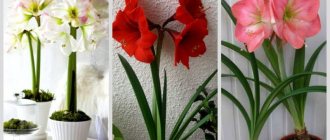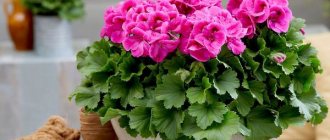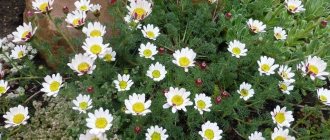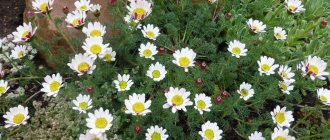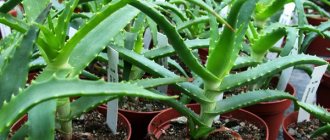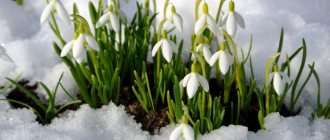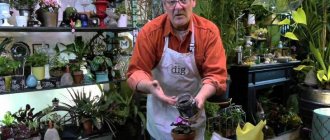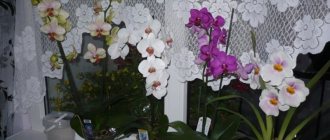Violet, cut
Incised violet (Viola incisa) is a type of wild violet, family. violet _ This is a small herbaceous plant without a stem. The short rhizome turns into a whitish-colored root.
The leaf blades are ovate, toothed, or pinnately divided, slightly pubescent. Mounted on short petioles.
Photo of a violet cut in its natural environment.
The endemic flower is bluish-violet in color, with a purple corolla, 1.8-2.3 cm in diameter, with a 7-7.5 mm spur and sepals. The flower has a rather strong “violet” aroma. The plant produces flower stalks much longer than the leaves. The seed capsule is oval in shape, up to 1 cm in length.
Natural hybrids of violet V.incisa with V.dissecta are known.
Important! The cut violet is recognized as an endangered species and is listed in the Red Book. Being a very vulnerable plant, violet suffers from human activity. Biological scientists are taking steps to save this unique flower.
Nut lotus
A rare species from the lotus family, growing in the rivers of the Amur region, Primorsky Krai, as well as along the shores of the Caspian and Azov seas. The rhizomes of this aquatic perennial plant are submerged in the mud, and the leaves protrude above the water surface. Flowering occurs in July–August. Pink nuciferous lotus flowers reach 25 cm in diameter. The seeds remain viable for many years. The population decline was influenced by the development of Russian river floodplains and severe floods. During the flowering period, the lotus suffers from hands that want to pluck the flower. People don't realize that a flower won't last in vases, it withers within a few hours. The increase in numbers is observed exclusively in protected areas of nature reserves and national parks of the country.
Basic rules of care
The cut violet is perfect for indoor floriculture. At home, this plant blooms and reproduces well.
Lighting and temperature
Violet loves light, but does not tolerate direct sunlight. An eastern window would be an ideal place to grow a flower; in the west, the bright midday sun can cause burns to the tender parts of the plant.
The plant grows well at normal room temperature. Conditions below +15˚С and above +25˚С are undesirable when breeding it. The flower does not tolerate sudden day and night temperature changes.
What kind of soil does he prefer?
In nature, the flower grows in places with poor but well-ventilated soil. This determines the choice of soil. The soil for violets should be light, porous, well breathable and absorb moisture.
When preparing soil for a flower, the following components are used:
- nutrient soil (leaf soil with the addition of humus) - 30%;
- peat (high peat) - 20%;
- coarse sand – 30%;
- soil loosening agent (perlite or vermiculite - 10%);
- charcoal or chopped sphagnum moss - 10%.
Notched violet needs light, well-draining soil.
As can be seen from the list, the deficiency of one component of the mixture can be compensated for by similar others . Before use, the soil is disinfected by heating it in an oven at 100˚C or spilled with a solution of phytosporin.
An important factor is the acidity of the soil. The flower can only grow on slightly acidic soils. The acidity of the soil is checked with litmus paper. With increased acidity, the substrate is supplemented with dolomite flour.
Choosing a pot
The root system of a flower does not grow deep, but grows along the surface of the soil. In addition, it is better to plant several copies of the plant in one pot. This improves the overall appearance of the composition. The pot should be shallow , but with a sufficiently large diameter.
Effect of air humidity
The cut violet loves high air humidity , but does not tolerate moisture on the leaves and stems. Therefore, under no circumstances should it be sprayed. If the room is too dry, the solution would be to install a container of water next to the pot.
Watering and fertilizing
The plant prefers the soil to always be slightly moist . Water carefully, avoiding moisture getting on the leaves.
You can combine top and bottom (into the tray of the pot) watering.
The flower should be fed monthly in the spring and summer. Fertilizers usually use complex mineral fertilizers in low concentrations.
In the wild, cut violet is extremely unpretentious. It easily tolerates drought, cold and other unfavorable conditions.
This is interesting! In indoor culture, the plant is very capricious and requires attention.
Pruning and hygiene
The flower does not require pruning. Old, unattractive leaves should be removed. Under no circumstances should you wash the plant. If the leaves are very dusty, carefully clean them with a brush.
Transplantation, rejuvenation
The cut violet is not prone to stretching the stem , like its close relative, the Uzambar violet. Therefore, flower rejuvenation is not often necessary, because the life cycle of a violet is about 10 years.
Flowers are transplanted to replace depleted or acidified soil:
- Expanded clay is placed in a thick layer on the bottom of the pot, because the root system of the flower does not penetrate more than 5 cm into the pot;
- Prepared soil is placed on the drainage;
- On top there is again a layer of expanded clay, after making a hole in it, the plant is planted.
Transplantation must be done as carefully as possible; the roots of the seedling are thin and fragile.
Transplanting cut violets should be done very carefully.
Snowdrop latifolia
The plant is endemic to the central part of the Caucasus, and is found in alpine and subalpine meadows. The broadleaf snowdrop spends most of the year in the form of bulbs underground. This is a frost-resistant species that prefers shaded areas. The snowdrop wakes up in the fall, and in the spring it grows green mass. The flowering period occurs in March – April. Flowers exude a delicate aroma. The exact number has not yet been established. In some areas the species is facing complete extinction. Tourists and plant pickers uncontrollably pick flowers and dig up bulbs. Due to cut foliage, the quality of flowering next year deteriorates.
Sources
- https://MyOrchidea.ru/fialka/nadrezannaya/
- https://proklumbu.com/komnatnue/fialka/nadrezannaja.html
- https://natworld.info/rasteniya/10-redkih-rastenij-iz-krasnoj-knigi-rossii-nazvanija-kratkoe-opisanie-i-foto
[collapse]
Features of flowering, growth and reproduction
What do flower stalks look like?
Before flowering, the plant produces flower stalks that are significantly higher than the height of the leaves. The peduncles are densely pubescent, slightly curled at the top and have one flower each.
Violet flowers are bluish-violet, very fragrant. The flower stays on the plant for about a week , but in the heat it fades earlier.
Violet blooms extremely irregularly . For flowering in the autumn-winter period additional lighting is required.
Advice! If the plant stubbornly refuses to bloom, it must be fed several times with potassium monophosphate: a quarter of a teaspoon per 1 liter of water.
Reproduction methods and features
The cut violet does not reproduce either by dividing the bush or by children.
The only way to propagate a flower is by seeds .
When several plants are placed in one pot, cross-pollination occurs and seeds set easily.
The fruit of the flower is a seed capsule 1 cm in size. The seeds have good germination.
How long does it take to grow an adult plant?
To grow young plants from seeds, you need to sow them in a light substrate without deepening .
The planting tray must have drainage holes and a layer of expanded clay at the bottom. Crops should be covered with glass or polyethylene
When the seedlings have real leaves, they should be planted in separate small pots with drainage.
Already 40-60 days after germination, young seedlings produce their first flowers. The plant becomes fully mature within a year.
water chestnut
Water chestnut is a herbaceous annual that is found in Far Eastern rivers. This relict species develops exclusively in warm water. In low-flowing reservoirs it forms dense thickets. The glossy leaves are shaped like birch leaves. White flowers appear in midsummer. Ripe fruits look like the head of a devil. For a long time, water chestnut seeds were collected en masse for culinary and medicinal purposes. Today the plant suffers due to pollution of water bodies and long dry periods. To restore numbers, control over the state of the population is necessary.
Use in landscape design
Violet fits exceptionally harmoniously into the design when creating alpine slides and rockeries. Being in the fresh air, the flower shows unpretentiousness in cultivation : drought and cold resistance.
Cut violets are successfully used in landscape design.
The possibility of propagation by self-seeding and high decorative value make the plant attractive for widespread cultivation.
Habitats
The most widespread places of germination are considered to be:
p, blockquote 2,0,1,0,0 –>
- Siberia;
- Primorsky Krai;
- Altai Republic;
- Khakassia;
- Buryatia.
This flower does not grow outside of Russia.
p, blockquote 3,0,0,0,0 –>
Like other perennial flowering plants, it can bloom and bear fruit several times throughout its life. It tolerates drought, as well as overheating and dehydration without any problems. In addition, it develops well in the following areas:
p, blockquote 4,0,0,0,0 –>
- petrophilic steppes;
- areas close to molehills;
- abandoned paths on meadow steppes;
- weakly turfed river pebbles.
The number is currently not accurately estimated, but it is believed that the population decline is influenced by:
p, blockquote 5,1,0,0,0 –>
- high pasture load;
- urban sprawl;
- road construction;
- industrial development.
Reviews
Elena. “Three years ago I was given a flower for my birthday. I simply called it a violet; it bloomed with very fragrant flowers. Thanks for the detailed article, now I know that I have a cut violet growing. The description matches exactly. I’ll try to reproduce.”
Andrey. “I purchased three cut violet bushes from the Botanical Garden. Since then I have been successfully growing and propagating for alpine hills at the dacha. I would like to give advice: when propagating, add more sand to the substrate and shade the container with the crops before germination.”
Peony thin-leaved
A perennial plant growing in the European part of the country. Thin-leaved peony can be found in the steppe zone, on rocky mountain slopes, forest edges and clearings. The height of the plant can reach half a meter. Peony leaves are thin and divided into feathers. Flowering occurs at the beginning of May. The color of the flowers varies from purple to blood red. The diameter of one flower is 8 cm. Terry specimens are rare.
The plant is winter-hardy and drought-resistant, but does not bloom well in shaded areas. Due to the reduction in the area of the steppes, the number of peonies has sharply decreased. Today it can only be found in lands inaccessible for plowing. Another negative factor is grazing by livestock, which tramples the aboveground part of the plant. Also, thin-leaved peony suffers from massive collection and digging of rhizomes. Numerous populations have survived only in the territories of nature reserves.
